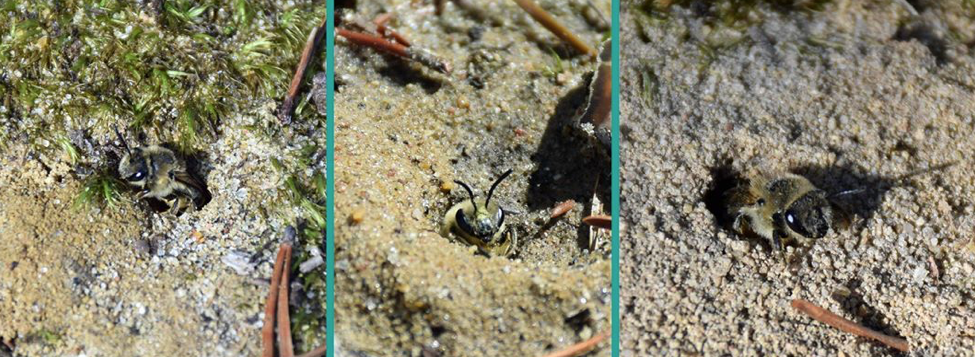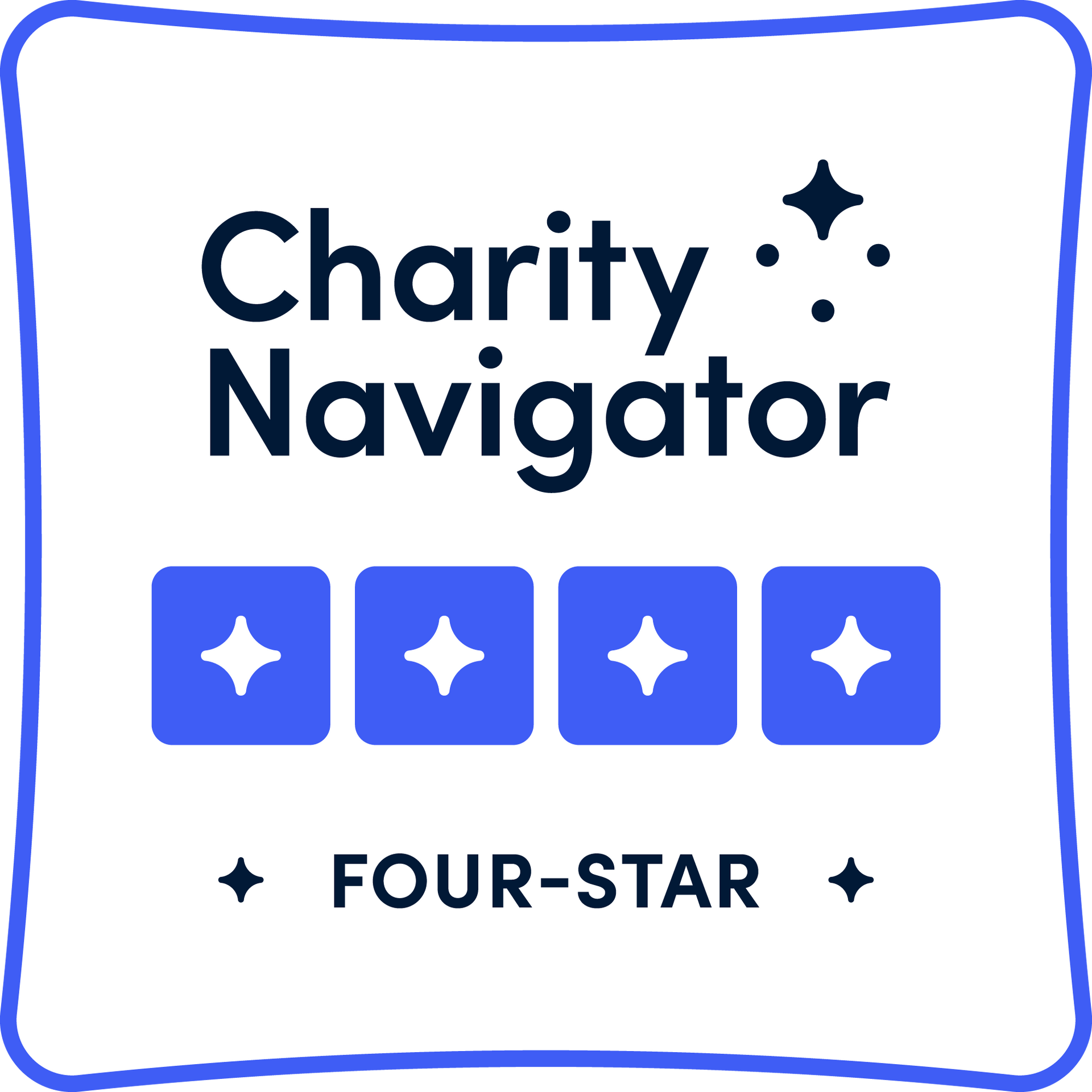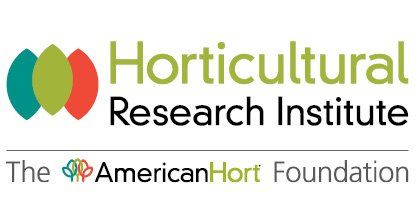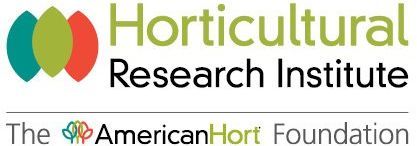Pollinator Research
& Resources
“Plants Bees Like Best” Publication
Best Management Practices (BMPs) for Bee Health in the Horticultural Industry
Funded Research
The Horticultural Research Institute is pleased to provide funding for independent research projects related to pollinator health. Click here to learn about the projects
Research Results
Access the Million Pollinator Garden Challenge Toolkit.
Pollinator Research & Resource News

By HRI Research
•
21 Feb, 2020
Spring has finally arrived – and not a minute too soon! I know this because the ground nesting bees are afoot.
Being a horticulturist and in the green industry, it is with some shame that I admit that my lawn is nowhere near worthy of being featured in Sunset or Southern Living magazine. Not even close. There is no turf to speak of – just a healthy stand of crab grass interspersed with winter weeds, like chickweed, bedstraw, and henbit. In the spring, most of the exposed soil areas
By Jennifer Gray
•
26 Feb, 2019
RESTON, VA. – In just three years, 1,040,000 gardens were registered with the Million Pollinator Garden Challenge (MPGC) involving an estimated eight million people, concentrated in the United States, and Canada with some in Mexico, and across the globe. From tiny yards to public gardens, the million plus gardens add up to a network of approximately five million acres of enhanced or new pollinator habitat. Pollinator Gardening Hot Spots, where high percentages of the local population registered gardens, include: the desert southwest, Santa Fe, New Mexico, Prescott and Flagstaff, and the Phoenix-Mesa-Scottsdale, Arizona metro area. The Smoky Mountain region, which straddles North Carolina and Tennessee, contributed over 35,000 gardens. These areas, along with St. Louis, Missouri and others also support high bee density and diversity. Research indicates that the impact of these small-scale pollinator gardens has added significant support to pollinator abundance and diversity. Metro areas with the highest number of registered gardens include Atlanta, Chicago, Miami-Ft. Lauderdale, Philadelphia-Camden, Washington DC, and New York City. Launched in June 2015 by the National Pollinator Garden Network (NPGN), the goal of the MPGC was to create networks of gardens to help save pollinators, which are responsible for 1 out of 3 food bites we take each day. “Together, through collaborative conservation we are restoring pollinator populations that provide the foundation of our ecosystems and our food supply.” said, Collin O’Mara, President and CEO of National Wildlife Federation. “When we save wildlife, we save ourselves”. With 40% of all invertebrate pollinator species – particularly bees and butterflies –at risk of extinction (National Research Council, 2007), NPGN responded as the largest pollinator conservation effort to engage the horticultural and voluntary sectors in a major role —offering a hands-on way for citizens to restore and enhance pollinator habitat. Co-founding organizations: National Wildlife Federation; Pollinator Partnership; American Public Gardens Association; AmericanHort; National Gardening Association; American Seed Trade Association; National Gardening Bureau; and KidsGardening.org, led the doubling of the NPGN to over 50 conservation, garden trade, garden club, and voluntary civic and federal partners. Nancy L. Hargroves, president, National Garden Clubs, Inc. inaugural NPGN member, stated, “Our 5000 clubs in almost every state are proud to collaborate with the NPGN. The significant increased awareness and action for pollinators was not limited to any one project, but combined, has a greater total impact on the world.” “Our collective efforts have accomplished great things for bees, butterflies, and other pollinator species that play a critical role in our natural world,” says Val Dolcini, president of the Pollinator Partnership. “From enhancing our food supply to increasing the biodiversity of our environment, these hard-working pollinators need to be protected at all costs. By protecting their lives, we’re preserving ours.” An impact report, released today, indicates the MPGC led to a shift in consumer awareness, and wider actions such as pro-pollinator pledges, proclamations and policies. Since the campaign launch, 92 percent of garden centers have seen an increase in demand for pollinator-friendly plants and services and 86 percent are offering more pollinator-friendly plants, services, and education. Craig Regelbrugge, senior vice president of AmericanHort, applauds these efforts. “Leaders in horticulture have stepped up to meet consumer demand for pollinator friendly plants and to provide the necessary education about sustainable methods that support habitat.” Moving Forward The 2019 call to action is designed to build on the momentum of Challenge in two ways: 1) Expanding garden habitat by asking Americans to plant at least three different pollinator-friendly plants that bloom in three different seasons (spring, summer and fall) to help ensure a consistent food supply for pollinators. The MPGC map will stay open for new registrations, and plant/garden descriptions. 2) Track the outcomes of this movement, by encouraging everyone to participate in citizen science projects that help pollinators at https://www.scistarter.org/pollinatorgardens. “The passion for pollinators is clearly evident. Let’s pass it on and encourage the 35 million Americans who garden with flowers, to each put in one new pollinator friendly plant per season each year. Imagine the transformation!” says Mary Phillips, National Wildlife Federation, NPGN coordinator. For more information about the Million Pollinator Garden Challenge or to learn about what can be done to reach the next million, contact Peggy Anne Montgomery at peggyanne@gardenmediagroup.com or Anna Vecchio at VecchioA@NWF.org
By Jennifer Gray
•
19 Jan, 2017
WASHINGTON, DC and COLUMBUS, OH —The Horticultural Research Institute, the research foundation of AmericanHort, is pleased to announce the release of Best Management Practices (BMPs) for Bee Health in the Horticultural Industry. BMPs are intended to inform horticultural professionals about the green industry’s impact on bee health. Through the use of BMP guidelines, horticulture can continue to play an important role in pollinator health. In 2015, the Horticultural Research Institute recognized the need for sound research to develop best production and management practices, educate, and empower the green industry. HRI, in collaboration with AmericanHort, continues to directly fund and leverage research to refine science-based guidance on horticultural practices and protecting bee and pollinator health. As part of the broad-based Horticulture Industry Bee & Pollinator Stewardship Initiative that includes industry and consumer outreach and the establishment of industry best practices, HRI has directly funded four important research projects, launched the Grow Wise, Bee Smart website, and joined the Million Pollinator Garden Challenge campaign. Jon Reelhorn, HRI President, states, “Investment in research surrounding horticulture’s role in pollinator health is part of HRI’s longstanding commitment to fostering new information relevant to horticultural practices, techniques, and principles. We are pleased to have developed a set of BMPs that offer specific guidance to the industry to refine their stewardship role in bee health.” Pollinators as a whole encompass a diverse population of thousands of different species, such as managed honey bees, wild bees, butterflies, birds, and bats. Protection of pollinators in general, especially bees, continues to be a major concern among the general public and within the green industry. Several culprits have been identified as factors contributing to managed honey bee losses, including Varroa mites, other pests/diseases of bees, loss of habitat and nutrition, and off-target effects of pesticides. Alternatively, wild, unmanaged bee populations are most greatly affected by landscape changes and habitat degradation. HRI developed the BMPs, which cover greenhouse and nursery production, woody ornamentals, and managed landscapes, with the assistance of researchers and apiarists throughout North America. Updates to these recommendations will be made as additional research results regarding bee and pollinator health are released. For the full Best Management Practices (BMPs) for Bee Health in the Horticultural Industry, visit the GrowWise, Bee Smart website. To learn more about the Horticultural Research Institute and its efforts in developing science-based recommendations for the industry, visit the HRI website or contact Jennifer Gray, HRI Administrator by email or (614) 884-1155.
By Jill Calabro, PhD
•
28 Apr, 2016
With all the discussion about honey bee health, the implication is that a wealth of information exists about what is normal or healthy for a honey bee. Sadly, there is not. Very little information exists detailing the presence of honey bee pests in the US. Finally we are getting some answers. The National Honey Bee Disease Survey was initiated in 2009 to document honey bee pests and pathogens throughout the US in the response to concerns over declining honey bee populations and to meet import/export requirements for international trade. A report summarizing the first five years of sample collection has just been published. Researchers detailed their observations on mites, fungal pathogens, and viruses. A critical component of the survey is to also analyze pesticide residues in apiaries; however, this information was not included in this report. During the first five years of the survey, populations of Varroa mite and Nosema spp. (a fungal pathogen of honey bees) were far greater than expected. From 2009-2014, Varroa mites were positively identified in 87 – 98% of the sampled apiaries, and their populations were surprisingly seasonal. The highest monthly Varroa mite loads were observed in August through November. Furthermore, 55-70% of all sampled apiaries had mite populations over the critical economic threshold level at the critical time right before winter. Nosema spp. incidence ranged from 42-79% of sampled apiaries during 2009-2014, and was greater in migratory colonies (than stationary colonies). Varroa mites are closely linked to virus infections; so, it follows that researchers saw a high incidence of viral infections associated with high mite populations. Eight viruses were monitored each year. Dwarf wing virus consistently had the greatest incidence with detected levels above 80% each year, while chronic bee paralysis virus doubled annually since 2010. There is some good news: three exotic pest problems of, Tropilaelaps mite, slow paralysis virus, and Apis cerana (Asian honey bee), have not yet been detected in the US. Researchers at the University of Maryland and USDA lead this multiyear effort. This first summary will serve as a baseline to measure trends and patterns over time, bringing much needed information to identify drivers of poor bee health. Plus it will be useful for detection of changes and new pests. Researchers also plan to correlate colony health to in-hive pesticide residues.
The Horticultural Research Institute (HRI), the AmericanHort foundation, has provided more than $9.5 million in funds to research projects covering a broad range of production, environmental, and business issues important to the green industry. Nearly $18 million is committed to the endowment by individuals, corporations, and associations .

© 2024
All Rights Reserved | Horticultural Research Institute| Privacy Policy | Accessibility Statement


